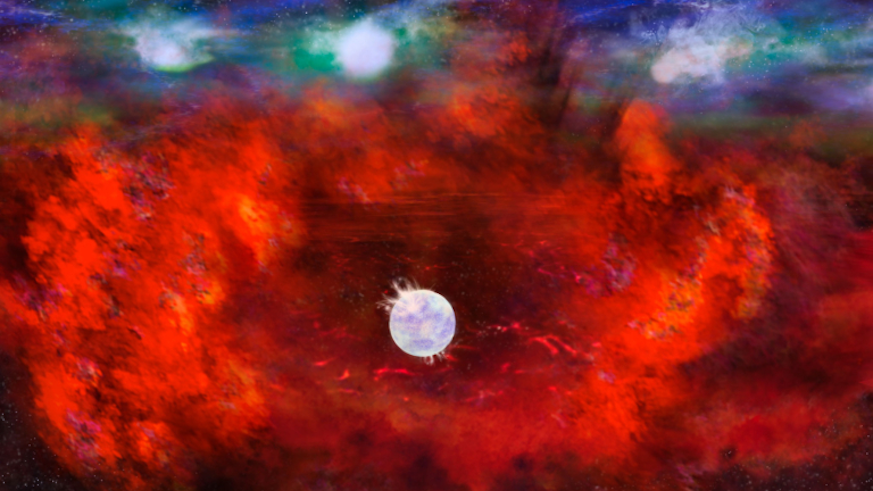Has a Cardiff Astronomer discovered the youngest ever neutron star?
30 July 2020

Astronomers make breakthrough finding in the 33-year-old mystery surrounding Supernova 1987A, unveiling fresh insight to support the argument that a neutron star hides deep inside the remains of the explosion. And not just any neutron star, but the youngest one ever reported.
Supernova 1987A came from the spectacular explosion of a star in the night sky.
It is believed that a neutron star had formed inside the original star just before it exploded, as particles known as neutrinos were detected on Earth around the time of the blast.
Scientists have been searching ever since for a small neutron star that could’ve been left over from the eruption.
As no evidence has been found, theories have even arisen to say that the neutron star could’ve in fact collapsed into a black hole instead. But observations from the ALMA telescope have finally made a break-through.
The ALMA telescope (Atacama Large Millimeter/Submillimetre Array) is one of the most advanced astronomical observatories in the world. Sitting in northern Chile, it is operated by the European Southern Observatory, the U.S. National Science Foundation and several international partners.
Excitingly, the telescope was able to detect a warm blob-type shape, providing the very first indication of this highly sought-after neutron star.
“We were very surprised to see this warm ‘blob’, made by a thick cloud of dust in the supernova remnant,” said Dr. Mikako Matsuura from the School of Physics and Astronomy at Cardiff University, who along with a member of the research team first made the report.
“There has to be something in the cloud that has heated up the dust and made it shine. That’s why we suggested there is a neutron star hiding inside the dust cloud.”
Dany Page is an astrophysicist at the National Autonomous University of Mexico. “I was halfway through my PhD when the supernova happened,” he said, “it was one of the biggest events in my life that made me change the course of my career to try to solve this mystery. It was like a modern holy grail!”
The study by Matsuura and the team, published in The Astrophysical Journal, goes a long way to demonstrate that this neutron star exists, and was transported to it’s current position by the incredible force of the supernova explosion, (said to be 10x the speed of a rocket!). And interestingly, the team have placed the star exactly where scientists had predicted it would be.
As the star has been dated at just 33 years old, it is now the youngest ever neutron star in nearby, which really comes into perspective when we consider that the second youngest is 330 years old!
This discovery builds upon years of Supernova 1987A observations, where the ALMA telescope has been able to progressively reveal more and more insight as it’s grows increasingly advanced in its capabilities. Many previous telescopes have studied Supernova 1987A, but none have been able to reveal this much detail.
That being said, definitive proof of the neutron star’s existence can only come when a clear picture of it is obtained. However, Supernova’s dusty remains prevent this from being possible, and it’s likely to be decades if not more until a clearer view is possible. But for now, we can proudly say that this stands to be the closest sighting to date.